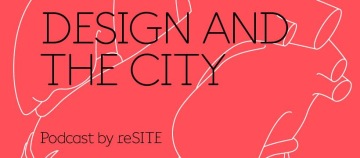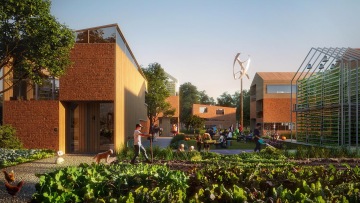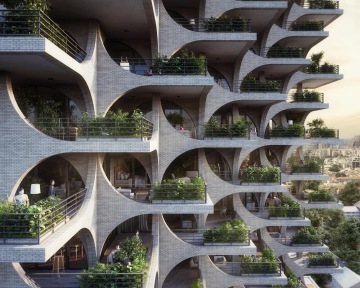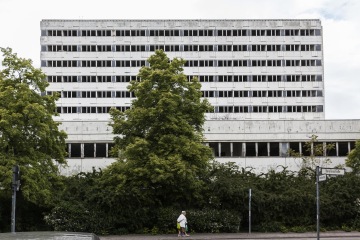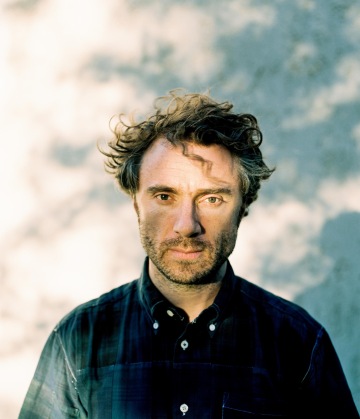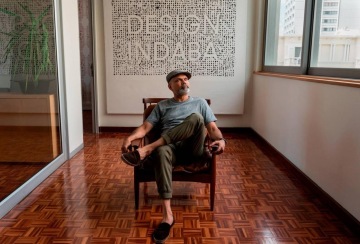
Giving Design a Higher Purpose with Ravi Naidoo
Ravi Naidoo, the driving force behind Design Indaba, arguably the most influential design event in the world. The event takes place annually in Cape Town is only the tip of the iceberg. Listen as he pushes the boundaries of the purpose design holds with the simple question—what is design for? Photo courtesy of Design Indaba
What’s design for? Is design a handmaiden for consumption? Is design just to sell more widgets? Or is design in the service of people? What's design for?
Listen to Ravi Naidoo on Design and the City now:
Could design improve the quality of life? And how could it do it not just for the haves but also for the have nots? Does design have in its power to give dignity? Is design just about objects? Or is design something else? Could design be a plan? Could design be a flow diagram? What is design? Does design always have to be objectified? Can design elevate cultural identity? Can design enhance democracy? I think the fundamental question is this—what’s design for?
reSITE: Exuberant. Optimistic. Romantic. Words Ravi Naidoo, the advocate who put African design on the map, uses to describe himself. Ravi’s story is one of reinvention. Just as South Africa was entering a period of newly found democracy, Ravi found an impetus to change his career. Over 20 years later, he is the driving force behind Design Indaba, arguably the most influential design event in the world. The event takes place in Cape Town every year, and it's only the tip of the iceberg.
Does design have it in its power to give dignity? Is design just about objects? Or is design something else?
Ravi Naidoo: Hi, I'm Ravi Naidoo, I'm the founder of Interactive Africa, a company based in Cape Town, South Africa. The thing it's probably most famous for is having created the design platform called Design Indaba. "Indaba" is spelled I n d a b a. It's a Zulu word, it means a gathering of people and it also means the news. Design Indaba has become a multi-level platform that goes beyond the conference and is both a think-tank and a do-tank. So it has, we say, three days of talking and 362 days of doing. Since it started in 1995 it has leveraged over 200 projects across South Africa, increasingly across Africa and the rest of the world.
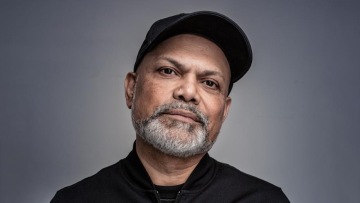
reSITE: Not many know that Ravi came to design from an entirely different field, abandoning his research at medical school for a career in the creative industry. This is a story of incredible sensibility, living through a particular moment in history, recognizing its direction, and having enough courage to follow to become a part of its transformation.
Naidoo: I'm an accidental design advocate. I come from academia. I was at med school. I was doing postgraduate research in physiology at the University of Cape Town Medical School. About the time that Nelson Mandela was released from prison, it was about the time that I felt this tumultuous change going on in the country and I thought I could reinvent myself. I got a job in advertising peculiarly enough, but mostly because this ad agency had a pharmaceutical account and I could go in and offer value.
What is design? Does design always have to be objectified? Can design elevate cultural identity? Can design enhance democracy? I think the fundamental question is this - what’s design for?
When I was there, I started to see the joys and the wonders of creativity, of design. I was quite smitten by it. It was those early days: I started an MBA and halfway through I decided to leave my day job and start up this platform called Interactive Africa. It's done a lot of things, so it's not just only being design advocacy. In fact, yesterday we were part of a platform that's just created Africa's first 5G network, which is lovely. So, it does more than just design, but I think the design aspects it's something that we are super proud of.
We really believe that the design and Design Indaba, the platform we created, has become a wonderful dreamscape, a wonderful place where we could reimagine South Africa. It's almost become this super creative agency for the country. It has done a whole lot of projects in the public domain. We've been able to all get the genius of all of these amazing people that we couldn't corral from around the world and across the country, and get the genius to be able to leave the building and settle on the high street and settle in the community. I think that gives it a way better purpose than just being a conference.
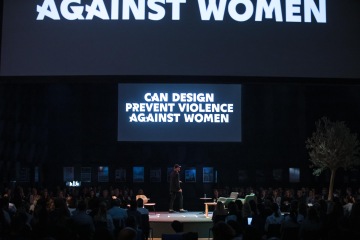
reSITE: Ravi made his way in the design world as its fierce advocate, elevating it to a noble purpose by arguing, that, if used responsibly, it can spur democracy, along with cultural, social and economic change. We’ve discussed regeneration throughout the first season of our podcast - in terms of both our cities and ourselves. Ravi shares his perspective on why regenerating himself is so important and how it is closely tied to his mission.
Naidoo: My mid-life crisis. I'm going through a massive regeneration. I mean, in the nicest possible way, there’s no issues, it's just about utilizing the time and space, I'm just going “Marie Kondo” on my life right now, pairing it down, focusing on the things that really matter. If you talk about regeneration, I think I'm going through the regeneration process of my own, mentally and more in terms of focus. I've also decided that I love what I do, and I want to extend the runway. I want to try to do it for as many more years as possible. The first thing I did was get fit, so I'm the fittest I've been in my entire life, to be honest.
reSITE: Ravi has been a tireless force in design activism, involving himself in various humanitarian initiatives not only in South Africa but across the continent and the globe. From low-cost social, housing projects, security enhancement, or the setup of contemporary infrastructure - Design Indaba inspires and empowers people to create a better future through creativity. And, assessing focus is compulsory to driving that impact.
Naidoo: The work was always wholesome, it always gave me a great reverb, but you also need to take care of all of you: you need to take care of your mind, your body; and you need to renew that constantly. Sometimes we can take that for granted, so I just said to myself a classical maxim — less is more. We've grown very quickly, very fast, and so maybe we had too many irons in the fire. Now we are trying to cherry-pick and do the ones that have maximum impact saying no to more things. It's a problem when you're absolutely exuberant. I'm just super excitable, I'm an incurable romantic, I fall in love with new projects all the time. As you grow old, you just get a bit more discerning about the projects that really, really, truly matter and the ones that could kind of move the dial, the ones that could have an impact.
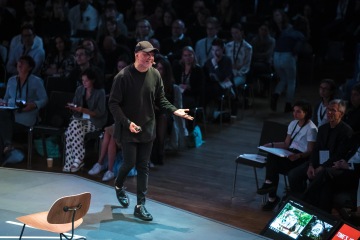
reSITE: Ravi’s time growing up in Cape Town has certainly shaped how he approaches projects that maximize social impact as he utilizes what the South African landscape has to offer for self-regeneration.
Naidoo: I live in one of the most beautiful cities on the planet, in Cape Town. When you live there it's just a lifestyle, that almost is natural to spend a lot of time outdoors. It's got this gorgeous Mediterranean climate. I live on the slopes of the mountain. Most of the gorgeous things you can do are free: hike up the mountain, beautiful beaches. I think it's a massive factor in living there that it's super outdoorsy and very fitness-oriented. Very much so.
As you grow old, you just get a bit more discerning about the projects that really, really, truly matter and the ones that could kind of move the dial, the ones that could have an impact.
reSITE: But Cape Town is also a city of extreme duality. The stunning, natural landscape is the background to inequality that has a hold on the built environment. Ravi sees design as the solution to healing the cities’ deeply ingrained social and spatial issues.
Naidoo: I think Cape Town's got major problems as well. On the one hand, it's desperately gorgeous, but I think it's got some issues with regard to inequality. It's got a major issue of the divide between the rich and the poor. It plays itself out spatially in the city where the poorest people live in the farthest parts of the city and public transport infrastructure for them is not great.
I think we need to start to really look at a complete makeover and a spatial redesign of the city. We should look at how we could get more low-income housing closer into the city, and improve the densification of the city. It's a very scrawling, large city of around 120km radius. I think we should do more in terms of reimagining. The spatial planning was imposed on the city by the colonial era and the apartheid era. The spatial planning was done according to racial lines more than anything else. Even with us for more than 25 years into democracy, I don't think we've solved that yet.
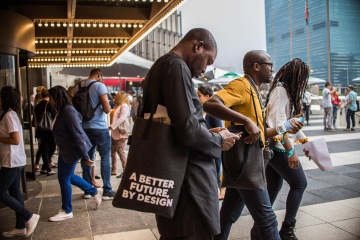
reSITE: Seeking solutions to revive Cape Town, Ravi drew inspiration from Chile, where an architect used a novel approach to infrastructure for marginalized communities. He argues that good design pushes the boundaries of its own definition, challenging its intelligence to be analytical of a bigger picture.
Naidoo: We have to find models that can start making the economics work and how to do it. We're constantly surveying models around the world. I love Alejandro Aravena's model in Chile where he did the so-called good half-house, which is a beautiful project that his studio Elemental did in Chile. He worked out that if the budget for a low-cost house was $10,000, why don't you spend 70% on the land closer to the city and then only spend $3,000 on the infrastructure. So he built half a house leaving large holes for people to fill it in because people are natural builders. He only provided the stuff that is hard to do which is servitude, access to electricity, sewage, etc.
I think we as designers, we must be these great integrators—understanding the sociological, environmental, economic issues, political issues in terms of fashioning a proper integrated solution.
It was a completely heretical, mad idea, super eccentric, but absolutely spot-on. You realize that for poor people one of the biggest expenses is their spending on transport. Bring them closer to the city and let the poor benefit from the economics of what young professionals do. Young professionals have an acronym called GASH—good area, small house. That's how you start in your journey. But poor people don't have that, they have BASH —bad area, small house.
The question is if we could give them a better area, so they are able to have homes that become more marketable and really help in doing some degree of wealth creation. I think some of the problems are not designed issues, they are almost like design-nomics? Alejandro's solution was 20% design, 80% economics. I think we as designers, we must be these great integrators—understand the sociological issues, the environmental issues, the economic issues, the political issues in terms of fashioning a proper integrated solution.
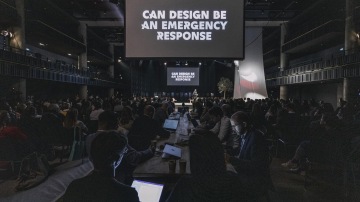
reSITE: His interpretation of design, holding it to a higher purpose comes from his unbelievable amount of conviction to use design and creativity as a catalyst for change
Naidoo: I always feel that it's about identification of problems and it's about trying to solve a problem. That's where you get your relevance from. Most of the projects that we do aren't in response to a brief. We actually spot a problem and we try to corral the resources around it to try and solve it. Almost every single one of those projects was not really in response to a brief, it was in response to an area where we felt it hurt when it's trigger-pointed. It's almost like a doctor says: "Where does it hurt, son?". Where does it hurt and then try to impact those aspects.
We felt that, for example, in low-cost housing projects. We just felt that the housing solutions were not up to scratch, they were horrible, they were cringe-worthy, they were embarrassing, and it needed some attention. Our job is not necessary, we are not property developers, but we are catalysts. We are about trying to offer alternatives and better resolutions, to widen the scope of what's possible. That's our self-imposed remit and mandate.
reSITE: We’ve been throwing that word around quite a bit - design. So, we dug deeper into all of its simplicities and complexities, what it means to Ravi, and what he aims to accomplish with expanding that definition and injecting it with a deeper ambition.
Naidoo: I think the design, on the one hand, it's having a moment. It makes the covers of Harvard Business Review, you're getting chief designer offices into the corporate C-suites so they become vice presidents of companies. You're getting massive companies having chief design officers. There's a kind of affirmation that design is a wonderful kind of tool for helping in creating a competitive advantage.
I think design should be about that skill or facility to improve the quality of life, and I would like to uphold the highest purpose for design.
A caution is that I think that we need to make sure that we uphold standards for design. I think, on the one hand, part of the design's benefit is that it is a broad church, but it's also a part of its weakness. Anyone can appropriate the terminology "design": hair designer, acrylic nail designer—so, where does design stop and end? I think design should be about that skill or facility to improve the quality of life and I would like to uphold the highest purpose for design.
I think it's very important. The other thing that's making waves in design thinking. On one hand, I think it's quite simplistic, it's a bit too mechanistic. Sometimes it is trying to take a process and codify it in a too simplistic way. It's quite bemusing to me that somebody could go to a design thinking workshop for three hours one afternoon, get a certificate and consider themselves like they've unlocked the secrets of design. I think part of design thinking is bullshit, but I also see the power of it being able to be a carrier and purveyor of what's good about design, but I don't think it's literally down to seven very easy steps.
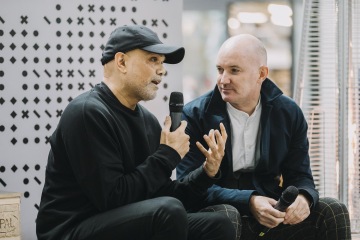
reSITE: We’ve already heard that Design Indaba’s ethos places an emphasis on being a do-tank rather than a think-tank. He uses an example from the commissioned Arch for Arch project, a memorial created to commemorate the life and work of Desmond Tutu. He describes the invaluable lessons they learned from making bold moves, prototyping ideas and taking action.
Naidoo: I think the nicest part about the whole design toolkit is that it's all about prototyping, right? Design is doing discipline. You learn by doing, you design by doing. It's about getting in there and doing, so even that Arch for Arch project. Before we got any support whatsoever, we made a prototype.
We conjured up this idea with Snøhetta and a South African architectural practice called Local Studio. Basically, we incurred the costs, we took a risk, but we'd realized that we needed to capture the imagination and the only way to do it was to almost make a reasonable facsimile of it. We walked to this amazing boat builder who bent the wood and was able to create a scale version of what this would look like. Only when that happened that we were able to garner support for it, get financial support for it and it became so real that the city planners, the urban planners, the heritage associations, the Anglican diocese, the parliament —all the bodies that needed to say yes and need for us to be able to do it were able to do it.
Sometimes we need to bootstrap an idea and make a prototype. In doing it, it also helps you to fine-tune your proposition and you learn an immense amount along the way. It becomes the best investment you're going to make in terms of realizing the project.
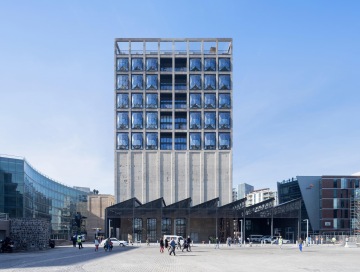
reSITE: Design can, and does, at times, exist in a bubble. The best strategy for designers to break out of this is by proving its relevance with action. We discussed how it is the simple honesty of making, advocating, and using creativity to remind us that design is relevant and imperative to our quality of life.
Naidoo: By building it and making it. We've got so many case studies over the time right now. The housing project, it's out there, its open-sourced to governments across Africa. It's been built as far afield as Accra, Ghana. Other people take up your ideas, that proves points. The Museum of Contemporary African Art that we were progenitors of has been an absolute transformative building in Cape Town and became quickly a magnet for the arts sector on the continent.
It becomes again a proof point that creativity could be a wonderful impetus for the economy.
I think you start small, you start to build a body of work. Sometimes it's not spectacular — the small, little, expeditionary sorties? We made an app with a speaker that we actually sold and it becomes again a proof point that creativity could be a wonderful impetus for the economy, for growth. We're not just only talking about creativity for social benefit, we're also showing it as a wonderful method and means to earn a crust, to be gainfully employed. We do work that's sometimes both full-profit and not-for-profit.
You do constantly have to prove yourself, you don't stop, we can't ever rest on our laurels. Next year will be out our 24th anniversary, but the next new pitch that you're doing, you still zero-based. Surely, you're coming with a reputation and a bit of an aura of what you've done, but for that particular project, it's ground zero. You can't be smug and complacent and you start it all off, have the mentality of a start-up and get going.
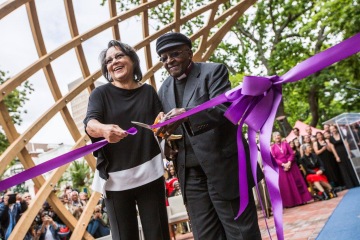
reSITE: Design is an industry where one learns by doing - and failure is a natural part of its creative process. We were curious about Ravi’s approach to failure and how he employs it for experimentation, growth and humility.
Naidoo: We fail often. Not all of our projects stood the test of time. Along the way, they become these great inflection points, places that just shift the trajectory. Part of your purpose is not to do things that are absolutely everlasting, sometimes they could be ephemeral and transient. While it lasted it could be good enough just to shift consciousness and to shift behavior, but as an economically viable project— not so. I don't think we should beat ourselves up about it, we should ask ourselves why we are doing it and what is it for.
I've got lots of cuts and bruises, lots of scuffed knees because so much about what we do is experimentation. It comes with that kind of disclaimer. Before we built those houses in a squatter camp we had no idea as to how it would be, but here it is—10 years on and it's there. Along the way, it was not without some major mishaps and setbacks while building, a lot of remedial work to be done. You commit yourself to this, you hardly ever get anything right the first time, just get over it. You will flounder, we all do. No matter how illustrious your reputation is or how many years you've got by way of experience —just get over it.
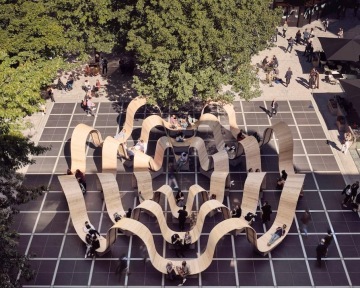
reSITE: That sort of humility requires a certain amount of fearlessness. The field of design has typically been a playground for beautiful objects whose production process requires energy and material resources that are not necessarily sustainable. Design is having a moment, where it has the opportunity to find alternative and innovative solutions to the pressing problems that plague cities.
Naidoo: When we started designing this was a lot more about colour, texture, surface and more about the people that you would call in at the end of the process in order to add lipstick. Whereas I think design has become a little more central right now. The remit, and the purpose, and the scope of design have widened. If you start to look at the graduates that we are hosting next month in Antenna, you start to see that the areas they are working in defy the standard classification codes for design. You look at the project and you say: is it architecture, is it urban planning? What exactly is it?
Almost every single one of those projects was not really in response to a brief, it was in response to an area where we felt it hurt when it's trigger-pointed.
I think a lot more of it is people realizing that the wicked problems have to be solved systemically. You'll find that designers have become better journalists and they are able to understand the technology and write codes, they have to understand economics, understand sociology. More and more the designer of the now tend to be aware of that and tend to be less about servicing the design industrial complex, meaning waiting for a commission from a furniture company to make a new chair, but actually putting themselves in harms way, stepping into the public square, creating completely new to the world projects.
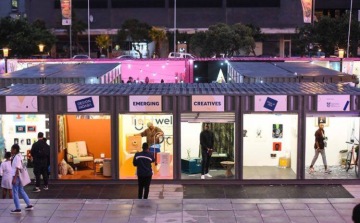
There's a designer in Cape Town who's created a new app that's become invaluable in being able to have primary health care workers while they’re working out in deep rural areas to have access to expert advice from the best specialists who happen to be in the major cities. That is the most amazing design that solves a fantastic challenge. In the old days, people would say: is that design? Of course, it is. More and more in our days, we're starting to see design venturing into these areas.
I'm so excited about the scope of where the design's going. For me, design is responding to the crises of the day.
We had this year at Design Indaba the fabulous people from Zipline who are aeronautical engineers but they designed the world's largest commercial drone service which delivers blood and other emergency medical supplies over the really difficult terrain of Rwanda through two distribution centres. They are able to crisscross Rwanda, it's absolutely fantastic.
I'm so excited about the scope of where the design's going. For me, design is responding to the crises of the day. We've solved for teacups, we've solved for chairs mostly, and we've got some more vexing issues that us designers must be involved in.
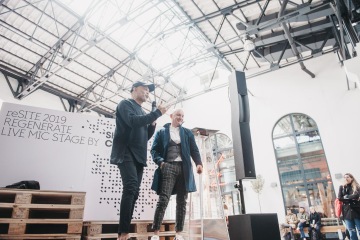
reSITE: Many designers have learned to adapt, becoming experts in areas beyond just design where they can gain a deeper perspective. Ravi expressed his wish for large organizations and national institutions to involve creative professionals and designers in their respective fields. And as we grapple with the damage from climate change, design could be the salvation to a sustainable future for us all.
Naidoo: I think they are needing to become spaces that have to be open to innovation and open to new ideas. They tend to be very high-bound, there tend to be people who have formulae and methodologies that they just step and repeat year after year. In many instances, even the processes in terms of how they commission new work do not really allow for the best idea. They need to become better commissioners, they need to create these kinds of fora for innovation.
We're doing a new project with the UN, it's called Design United. It's going to take place in the fall of 2020 in New York. The whole motivation for that is that in terms of Sustainable Development Goals, we feel that governments are talking to environmentalists, they're talking to policymakers, they're talking to economists, but they are not talking to the creative community. We want to corral the creative community because the community has the agency. They have the wherewithal to be able to help to solve this because clean water is a design challenge, better housing is a design challenge. So why hasn't the UN asked us, designers? We are trying to solve this, it's increasing a part of our remit.
What it means is that in all that we do we have to be a way more conscious, not just about the products, but the process behind every single product.
I think it's the global agenda of the SDGs - the Sustainable Development Goals. If designers are looking for an agenda for the next eleven years - until 2030. They can do no worse than utilizing the SDGs as a template for their work. It's the biggest multilateral agreement we've ever had in the history of humanity, and it brings the sharp focus what the pressing issues [are], it's a list of the problems that we need to solve if we need to be able to inhabit the Earth for a lot longer and not to be involved in our own mass extinction. I don't think of any project right now that could be more crucial than spaceship Earth and focusing on that.
What it means is that in all that we do we have to be a way more conscious, not just about the products, but the process behind every single product. We need to be conscious of the full value chain, understand where things come from and where they go to and be responsible for all of it. It's a great responsibility that designers must be completely open to and must be able to carry it going forward: where things come from and where do they go to — the commissioning and the decommissioning of everything.
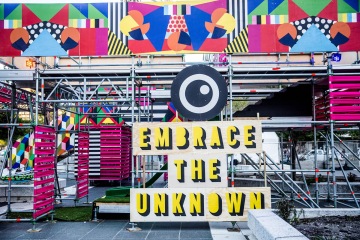
reSITE: While we see the realistic, yet thoughtful approach Ravi brings to the design community, he still views himself as a romantic. Ravi always dreams big for Design Indaba and we were curious what future projects he has in mind for the next decade and beyond.
Creativity is the ultimate renewable energy.
Naidoo: Yeah, I've got a crazy one. It's positively bonkers. I'm worried that if I say it, I'm going to have to freaking do it. I want to do a project in every country in Africa. That'll kind of take care of my next twenty years. There are 54 countries in Africa, I think I would need to create a Studio 54. So far we've got projects in three, so...God Almighty, 51 to go. That would be really cool to be using Cape Town as a base but become a bit more of a catalyst, an agitator, and a provocateur for projects in other cities of Africa. We should be able to try to bottle some of the Design Indaba energy and share it with more cities across the continent.
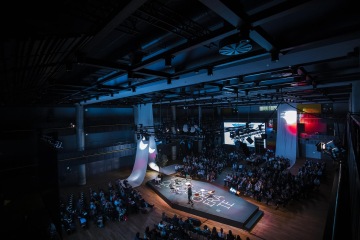
reSITE: Back to Ravi’s questions...
Naidoo: What is design for? Could design improve quality of life? Can design give dignity? Or, is design just about objects? Can design elevate cultural identity? Can it enhance democracy? What is design for? Could design improve the quality of life? And how could it do it not just for the haves but also for the have nots? Does design have in it the power to give dignity? Is design just about objects? Or is design something else? Could design be a plan? Could design be a flow diagram? What is design? Does design always have to be objectified? Can design elevate cultural identity? Can design enhance democracy? I think the fundamental question is this - what’s design for?
It’s a broad church with many portals. Come in. Let's make a better world through creativity.
reSITE: Questions that push the boundaries of what constitutes as design challenge us to apply its absolute power. We will wrap up with words from Ravi speaking at reSITE 2019 REGENERATE.
Ravi Naidoo at reSITE: Why do we do this? We are led by a simple mission. And our mission is: ideas are the most amazing powerful force. Creativity is the ultimate renewable energy. We can conceive a better world through creativity.
The nicest thing about all of this in terms of design is that it is this malleable tool. It has great plasticity. We can do so many things with it. Don't be hidebound by your classifications of an urban planner or an architect or a product designer. Look at the world of design that is a wonderful source code and tool kit to reimagine the twenty-first-century. Because as a designer, we can be an optimist, we can be a dreamer, a thinker, a seeker, a researcher, an instigator, a provocateur, a collaborator, a catalyst, a futurist and an influencer, a convener, a connector, an experimenter, a demonstrator, a visualizer, a story maker, an educator, a changemaker, an accelerator, an activist, a reformer, a humanitarian. It’s a broad church with many portals. Come in. Let's make a better world through creativity.
That was Ravi Naidoo, founder of Design Indaba, the globes leading, interactive and progressive design festival, happening annually in Cape Town, South Africa.
Design and the City is brought to you by reSITE and organized as part of the project, Shared Cities: Creative Momentum. This podcast is produced by Radka Ondrackova, Matej Kostruh, Adriana Bielkova, Gil Cienfuegos and Polina Riabukha. It is directed and hosted by Alexandra Siebenthal, and recorded and edited by LittleBig Studio.
Listen to more from Design and the City
Human-Centered Smart Cities with Marianthi Tatari
Associate Director and Senior Architect at UNStudio, Marianthi Tatari, dissects different aspects of city-making that threaten the quality of life such as mono-functional spaces and commoditized smart cities and how to approach designing them with optimism. Photo courtesy of UNStudio
A New Generation of Architects with Chris Precht
Chris Precht’s aim to reconnect our lives to our food production by bringing it back into our cities and our minds can be found throughout his architecture. Listen as he discusses the importance of authenticity, creating spaces that activate our senses, and looking at our objective reality to solve the problems of our time.
Fighting Gentrification, Berlin-Style with Leona Lynen
A vast, unoccupied administration building in the heart of Berlin at Alexanderplatz - Haus der Statistik - has become a prototype for gentrification done right. Hear from Leona, a member of the cooperative, ZUsammenKUNFT, as she discusses how they are developing a mixed-use urban space oriented towards the common good. Photo courtesy of Nils Koenning
Designing on a Human Scale with Thomas Heatherwick
Thomas Heatherwick’s holistic approach brings a thoughtful dimension to architecture, design and urban spaces. Listen to the acclaimed designer along with ArchDaily editor, Christele Harrouk, as they explore how he approaches projects by considering them from a human scale.
